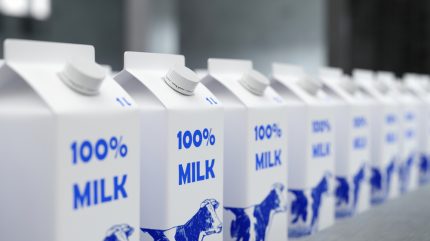
From the cartons of long-life milk in kitchen cupboards to single-serve juice boxes tucked into lunch bags, aseptic packaging is a quiet revolution in modern food preservation.
This innovative technology enables food and beverages to stay fresh for months without refrigeration, providing both convenience and a significant reduction in food waste.

Discover B2B Marketing That Performs
Combine business intelligence and editorial excellence to reach engaged professionals across 36 leading media platforms.
By combining sterile processing with hermetically sealed packaging, aseptic systems keep products safe from contamination while maintaining taste and nutritional value.
At its core, aseptic packaging involves sterilising both the food product and the packaging material separately before filling and sealing them under ultra-clean conditions.
This method differs from traditional canning or bottling, where products are filled hot or pasteurised in-container, often leading to compromised flavour or texture.
By using lower heat and shorter processing times, aseptic packaging helps preserve the natural qualities of the food, meeting the growing consumer demand for high-quality, minimally processed products.

US Tariffs are shifting - will you react or anticipate?
Don’t let policy changes catch you off guard. Stay proactive with real-time data and expert analysis.
By GlobalDataHow aseptic packaging works
Aseptic technology relies on three essential components: sterile product, sterile packaging, and a sterile environment. The process begins with ultra-high temperature (UHT) treatment, where liquid products such as milk, soups, or fruit purees are heated to around 135–150°C for just a few seconds.
This brief, intense heat destroys harmful microorganisms while minimising changes to flavour and nutrients.
Once sterilised, the product is rapidly cooled and transferred to a filling system operating in an aseptic chamber, ensuring no recontamination occurs. Simultaneously, packaging materials—often multi-layer cartons made of paperboard, aluminium foil, and polyethylene—are sterilised using hydrogen peroxide vapour or ultraviolet light.
The sterile product and sterile container meet in a tightly controlled environment, where the packaging is filled and sealed in fractions of a second.
This complex dance of sterilisation and precision engineering enables aseptic packaging to achieve an impressive shelf life of six to twelve months without refrigeration, depending on the product.
For manufacturers, this means fewer preservatives are needed, and products can be distributed through ambient supply chains, dramatically reducing energy use associated with cold storage and transport.
Advantages of aseptic packaging for food manufacturers and consumers
The benefits of aseptic packaging extend well beyond longer shelf life. For food producers, aseptic systems allow for cost-effective production and expanded market reach.
Because products do not require refrigeration, they can be shipped to regions with limited cold-chain infrastructure, opening new opportunities in developing markets and reducing the carbon footprint associated with chilled logistics.
For consumers, aseptic packaging offers convenience and safety. Long-life products are ideal for busy lifestyles, emergency preparedness, or regions where power outages can disrupt refrigeration.
Moreover, aseptic technology provides a high level of food safety by virtually eliminating the risk of post-processing contamination. This has been especially critical for sensitive products like infant formula or clinical nutrition drinks, where sterility is non-negotiable.
Sustainability is another compelling advantage. Compared to glass or metal containers, aseptic cartons are lighter and more space-efficient, leading to lower transportation emissions.
Many aseptic cartons are now made with increasing percentages of renewable materials, such as paperboard sourced from responsibly managed forests.
As recycling infrastructure for composite cartons improves globally, the environmental footprint of aseptic packaging continues to shrink, supporting a circular economy in packaging.
Challenges and innovations shaping the future of aseptic packaging
Despite its benefits, aseptic packaging faces challenges that drive ongoing research and development.
Recycling composite cartons, which consist of layers of paper, plastic, and aluminium, remains a hurdle in some markets where specialised recycling streams are not widely available.
Industry initiatives like the Alliance for Beverage Cartons and the Environment (ACE) aim to improve collection and recycling rates by working with governments and recyclers to invest in infrastructure and educate consumers.
Another area of innovation focuses on developing new barrier materials that reduce or eliminate aluminium foil, which, although effective, is energy-intensive to produce.
Companies are experimenting with bio-based polymers and advanced coatings to create more sustainable packaging while maintaining the same level of protection against oxygen, light, and moisture.
Automation and digitalisation of aseptic filling lines are also advancing rapidly. Modern aseptic systems integrate real-time monitoring and data analytics to ensure sterility, improve efficiency, and reduce downtime.
This digital transformation supports both food safety and profitability for manufacturers.
As consumers increasingly seek out healthier, preservative-free foods with clean labels, aseptic packaging will remain central to meeting these preferences.
By allowing fresh-tasting, shelf-stable products to reach far-flung locations, it supports global food security while aligning with efforts to reduce waste and lower environmental impacts.





